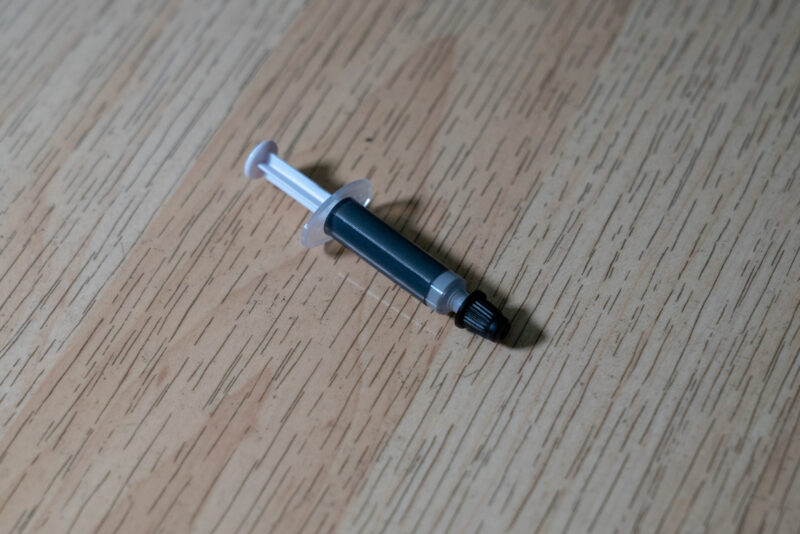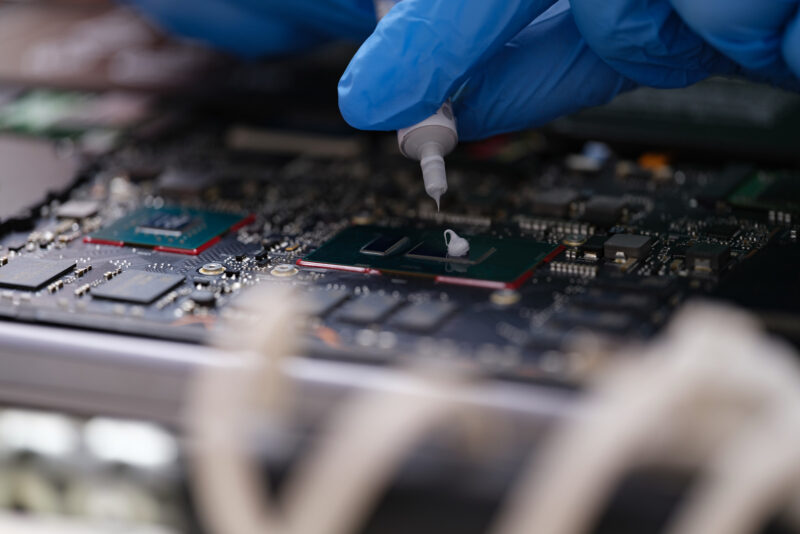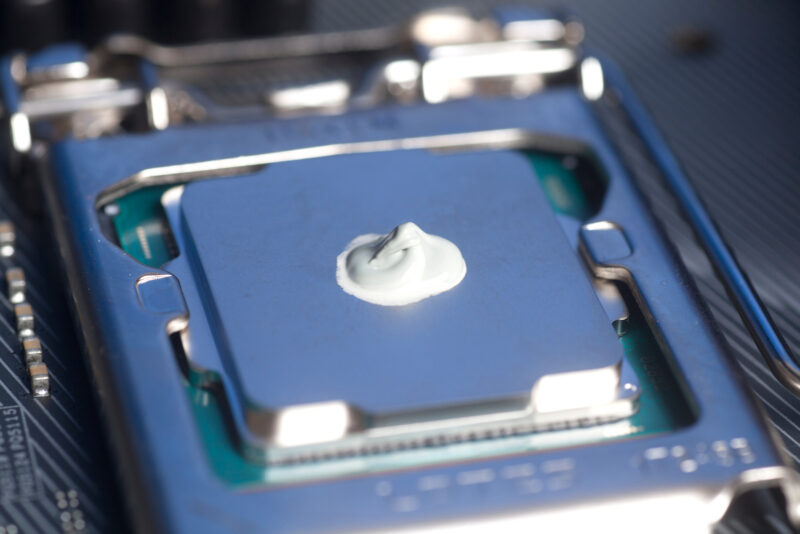How Long Does Thermal Paste Last?
Thermal paste is made with a polymerizable liquid matrix and electrically insulating conductive fillers. In other words, thermal paste is a thermally conductive compound that’s used as an interface between a CPU and CPU cooler.
Generally, thermal paste can last from 2 to 5 years in the tube. However, the exact amount of time thermal pastes lasts in a tube depends on its quality and how it’s stored. On the other hand, applied thermal paste should be replaced every 5 to 10 years. It’s recommended to reapply thermal paste if your CPU is getting hot.
Thermal paste is required in all computers to prevent your CPU from overheating and breaking down.
How Long Does Thermal Paste Last in the Tube?
If you have a tube of thermal paste without an expiration date, you may be wondering if it’s expired or not. As we mentioned earlier, thermal paste typically lasts up to 5 years inside the tube. However, its lifespan depends on the ingredients used to make it and which manufacturer made it.
The most common types of thermal gels are silicone, carbon, ceramic, and metal. Each different type of thermal gel has a unique performance, durability, and function.
As a general guideline, non-metallic compounds can last longer in the tube.
If you are interested in buying a new tube of thermal paste, we don’t recommend basing your purchasing decision on the solvents’ durability. This is because thermal conductivity is much more important.
As such, make sure you’re buying your thermal paste from a reputable company and ask beforehand when it will expire if the package doesn’t include an expiration date.
Furthermore, make sure to store the product properly.
This includes:
- Closing the cap tightly after each use
- Keep the paste away from extremely cold or hot temperatures
- Put the thermal paste in a sealed bag or container
- Don’t expose the thermal paste to direct sunlight
What Is Thermal Paste?
Thermal paste is a sticky compound that is used as a heat conductive interface between a microchip and its heatsink.
This substance covers the microscopic air gaps between the heatsink and the chip, maximizing cooling effects and optimizing heat transfer.
Furthermore, thermal paste is also known as conductive paste, heatsink compound, CPU grease, thermal grease, and thermal gel.
If your CPU comes with a stock cooler, then thermal paste will already be applied. CPUs that come without a cooler usually don’t have thermal paste, so you will need to apply it yourself.
However, it’s important to note that you must have thermal paste on your CPU. Without thermal paste, your CPU will overheat and potentially compromise your entire computer.
Different Types of Thermal Paste
Ceramic thermal pastes do not contain metal, meaning they are not conductive. As such, ceramic thermal pastes are affordable, safe, and easy to use. However, ceramic thermal pastes aren’t recommended for computer users who overclock their CPUs. This is because they will not conduct as much heat when exposed to high temperatures and will degrade faster.
Metal thermal pastes are the best at conducting heat, but they are also electrically conductive. Gamers and streamers tend to opt for metal thermal pastes since they are the most durable.
Silicon thermal pastes are typically applied to thermal pads when you get them. Furthermore, these thermal pads are easy to use, but they are also prone to drying out faster than other thermal pastes. Silicon thermal pastes also aren’t as effective at conducting heat.
Warning Signs That Your Thermal Paste Is Expired
If you notice that your thermal paste is watery, hard, or flaky, the thermal paste has gone bad. In this case, throw it out immediately and buy a new tube.
If the thermal paste has dried up on your CPU, you’ll need to replace the thermal paste. So, remove the dried up thermal paste with an isopropyl alcohol pad and put on a new layer of thermal paste from your tube.
How Long Does Thermal Paste Last on a CPU?
A proper application of thermal paste will normally last from 5 to 10 years on a CPU or any other chip. However, the exact amount of time your thermal paste will last depends on the computer’s cooling system, usage, climate, and the paste’s quality.
Here are the factors that can affect the longevity of applied thermal paste.
1. Excessive Use
If any of the following situations are true, you may need to replace your thermal paste sooner than normal.
- Your computer is overclocked
- You play graphically demanding games on your PC
- You notice a temperature rise in your PC, especially near the motherboard, but you’re certain there’s nothing wrong with the cooler or fan
All of the scenarios above cause your CPU to overwork and run extremely hot. As such, a hot CPU means a shorter lifespan for the thermal paste. This is why professional gamers may replace their CPU gel once a year or every other year.
Furthermore, your thermal paste will dry up faster if your computer is constantly running and not being turned off at night.
2. Thermal Paste Quality
If you opt for a budget-friendly thermal paste that’s lower quality, you shouldn’t expect it to be effective for more than 3 years. For this reason, we recommend purchasing a high-quality thermal paste when you’re reapplying gel to your heatsink.
3. Climate and Surroundings
If you live in a hotter climate, your thermal compound loses its effectiveness more quickly. For this reason, you’ll need to balance your computer’s internal temperature by installing efficient fans.
However, only regulating the temperature isn’t enough. This is because dust, lint, and dirt will accumulate inside your computer and degrade your thermal gel’s properties.
For this reason, we recommend using a can of compressed air to clean the inside of your PC every 3 months.
4. Excessive Paste
As PC users are applying thermal paste, they often think that more thermal paste is more effective. However, this isn’t the case. In fact, applying too much thermal paste may cause damage to your CPU. It also won’t last as long as regularly applied paste.
5. Component Replacement
If you happen to disassemble your PC because of a system upgrade or repair, you’ll need to apply thermal paste again. This is because the thermal paste will unstick once your computer is disassembled.
However, if you’re installing a new CPU (see also how to remove CPU from motherboard) that comes with its own cooler, it will already have thermal paste applied.
Verdict
Thermal paste is an essential component of your computer because it prevents your CPU from overheating (and will also prevent your computer from turning off suddenly). If your applied thermal paste has dried out and you continue running your computer, there will be a noticeable decrease in the PC’s thermal performance.
There isn’t a definitive answer when it comes to how long thermal paste lasts. This is because many factors are at play when it comes to drying out the thermal gel.
As a rule of thumb, thermal paste usually lasts from 5 to 10 years once it is already applied. On the other hand, thermal paste in a tube typically expires in 2 to 5 years.
Luckily, it’s easy to tell if your thermal paste has gone bad. If it looks watery or dry, you’ll need to replace the thermal paste.
When you purchase through our links, we may earn an affiliate commission at no additional cost to you.


